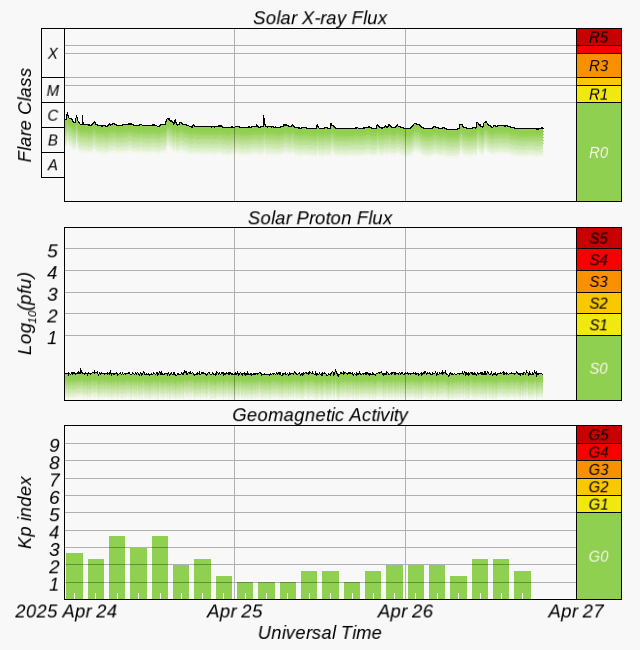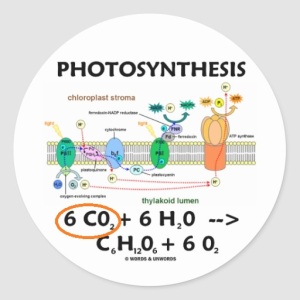Svensmark’s research at the Danish National Space Center suggests cosmic rays play a role in making clouds in our atmosphere. A reduction in cosmic rays in the last 100 years – due to the activity of our Sun – has meant fewer clouds and a warmer Earth.The following extract is from the book’s opening chapter.
The Chilling Stars is published by Icon Books
THE CHILLING STARS: A NEW THEORY OF CLIMATE CHANGE
By Henrik Svensmark & Nigel Calder1 A lazy Sun launches iceberg armadas
Our ancestors endured shocking variations in climate – Events often matched changes in the Sun’s behaviour – Rare atoms made by cosmic rays signal those changes – When their production increased, the world was chilled – But are the cosmic rays the agent, or merely a symptom?
A less public-spirited finder might have put the oddity up for sale on eBay, so the archaeologists of Bern Canton were grateful when Ursula Leuenberger presented them with an archer’s quiver made of birch bark. They were amazed when radiocarbon dating showed the quiver to be 4,700 years old. Frau Leuenberger had picked it up while walking with her husband in the mountains above Thun. There, the perennial ice in the Schnidejoch had retreated in the unusually hot summer of 2003, revealing the relic hidden beneath it.
The hiking couple had unwittingly rediscovered a long forgotten short-cut for travellers and traders across the barrier of the Swiss Alps. To keep treasure-hunters away, the find remained a secret for two years while archaeologists scoured the area of the melt-back and analysed the finds. By the end of 2005 they had some 300 items – from the Neolithic Era, the Bronze Age, the Roman period and medieval times.
The various ages of the items clustered in intervals when the pass of Schnidejoch was open, offering a quick route to and from the Rhone valley south of the mountains. There were no substantial human remains to compare with the murdered Ötztal ‘ice man’, found with a similar quiver high in the Italian Tyrol in 1991 and dated to 3300 BC. But the emergent history of repeated openings and closures of Schnidejoch gave a far more interesting picture of climate change.The Ötztal man is a prize exhibit for those who assert that the climate at the start of the 21st century is alarmingly warm. The ice that preserved his mummified corpse lay unmelted, 3,250 metres above sea level, for more than 5,000 years – since the world was in its warmest phase following the most recent ice age. Then, so the story goes, the manmade global warming of the industrial era outstripped all natural variations and released the body as a warning to us all.Quite different is the impression given by the relics found in the pass of Schnidejoch, at an altitude 500 metres lower than the Ötztal man’s ice-tomb. They tell of repeated alternations between warm periods when the pass was useable and cold periods when it was shut by the ice. The discoveries also cleared up a long-standing mystery about a Roman lodging house found on the slopes above the present-day town of Thun, where there was a Roman temple and settlement. The head of the cantonal archaeological service, Peter Suter, explained his satisfaction at the outcome: ‘We always asked ourselves why the lodging house was there. Now we know that it was on the route leading across the Schnidejoch.’
The youngest item found by the archaeologists was part of a shoe dating from the 14th or 15th century AD. It corresponds with the end of an interval known as the Medieval Warm Period. Thereafter the Schnidejoch was blocked by the glaciers of the Little Ice Age, the most recent period of intense cold. Nominally the Little Ice Age ended around 1850, but the gradual retreat of the ice took a century and a half to clear the pass, until its rediscovery early in the 21st century.Here is a tale of natural variations in climate having a practical influence on the lives and travels of Europeans over 5,000 years. The climate was particularly cold in two periods around 800 BC and 1700 AD. Effects of the latter episode, the Little Ice Age, persisted in the Schnidejoch for so long that even the locals forgot that a useful pass was ever there.
The Medieval Warm Period and the Little Ice Age were an embarrassment for those who, in recent years, wished to play down the natural variations in climate that occurred before the Industrial Revolution. A widely publicised but now discredited graph of temperatures, produced in 1998 by Michael Mann of the University of Massachusetts and his colleagues, tried to iron out the variations. Lampooned as the hockey stick, Mann’s graph showed the world remaining almost uniformly cool through most of the past 1,000 years until 1800. Then temperatures began to climb towards unprecedented highs in the late 20th century – so making the toe of the hockey stick and the supposed onset of an unprecedented episode of man-made global warming.
The relics from the Schnidejoch mock this Orwellian effort to make real-life events that were not politically correct disappear from climate history. They show that warming spells very like that of the past 100 years occurred repeatedly, long before the large-scale use of fossil fuels and the associated emissions of carbon dioxide gas were a possible factor. Attempts to argue that such events were not global are contradicted by abundant evidence for the Medieval Warm Period and the Little Ice Age from East Asia, Australasia, South America and South Africa, as well as from North America and Europe. Probing the errors that generated the hockey stick can be safely left to the statistical pathologists, while we explore the character and rhythms of climate change over centuries and millennia.
Sunspots missing in the Little Ice Age
Atomic bullets raining down from exploded stars, the cosmic rays, leave behind them business cards that record their split-second visits to the Earth’s atmosphere. They take the form of unusual atoms created by nuclear reactions in the upper air. Especially valued by archaeologists as an aid to dating objects is radiocarbon, or carbon-14, made from nitrogen in the air.Taken up into carbon dioxide, the gas of life by which plants grow, the carbon-14 finds its way via the plants and animals into wood, charcoal, bones, leather and other relics. The initial carbon-14 content corresponds to the amount prevailing in the air at the time of death. Then, over thousands of years, the atoms gradually decay back into nitrogen. If you see how much carbon-14 is left in an old piece of wood or fibre or bone, you can tell how many centuries or millennia have elapsed since the plant or animal was alive.
There’s a snag about this gift from the stars, as archaeologists soon discovered. Some of their early radiocarbon dates seemed nonsensical, even contradictory – for example, a pharaoh of Egypt dated as being younger than his known successors. Hessel de Vries of Gronigen found the explanation in 1958. The rate of production of carbon-14 varies. Measurements in well-dated annual rings of growth in ancient trees sorted out the problem, and the archaeologists had more reliable, though often ambiguous dates. And physicists could see changes over thousands of years in the performance of the Sun, as the chief gatekeeper of the cosmic rays. Its magnetic field protects us by repelling many of the cosmic rays coming from the Galaxy, before they can reach the Earth’s vicinity.
The variations that confused the archaeologists followed changes in the Sun’s mood. Low production rates of carbon-14 meant that the Sun was very active, magnetically speaking. When it was lazy, more cosmic rays reached the Earth and the production of carbon-14 shot up.The discovery opened the way to modern interpretations of the link between the Sun and the Earth’s everchanging climate, beginning in the 1960s. Roger Bray of New Zealand’s Department of Scientific and Industrial Research traced the variations in the Sun’s activity since 527 BC. He was able to connect increased production of radio carbon by cosmic rays to other symptoms of feeble solar magnetic activity.
A scarcity of dark spots on the face of the Sun, which are made by pools of intense magnetism, was one such sign. Reports of auroras, which light the northern skies when the Sun is restless, were also scanty when the cosmic rays were making lots of radiocarbon. And most significantly, Bray linked solar laziness and high cosmic rays with historically recorded advances of glaciers, pushing their cold snouts down many valleys. The advances were most numerous in the 17th and 18th centuries, which straddled the coldest period of the Little Ice Age. |





















